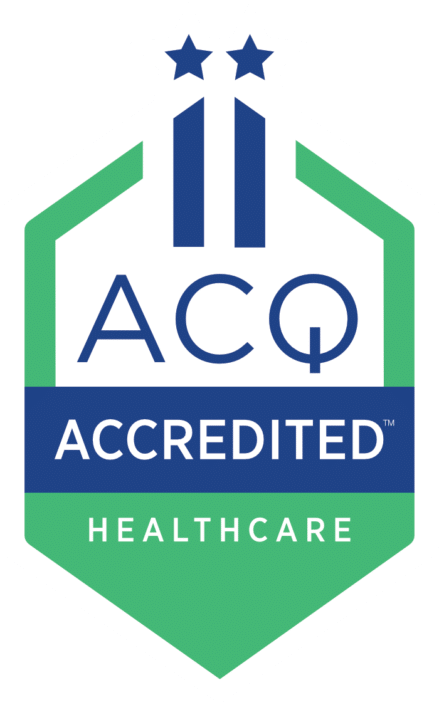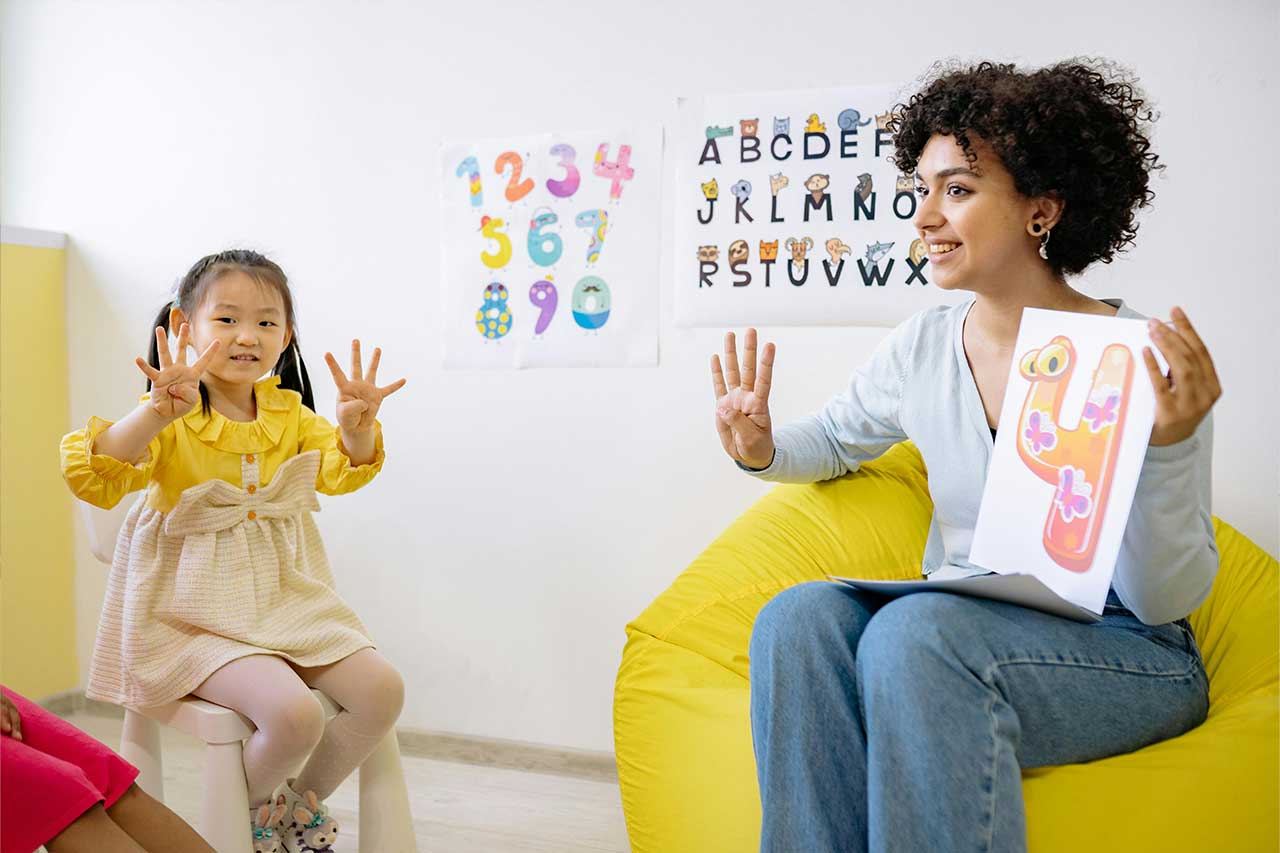When to Stop ABA Therapy
For parents and families, knowing when to discharge from ABA therapy is often as layered as the experience of enrolling in treatment and progressing through one-on-one and small-group interventions.
Applied Behavior Analysis (ABA) therapy is multi-faceted and highly-focused on individual skills, needs, and behaviors. Just as your clinical team works collaboratively to chart the best path for therapy and goal attainment, the move toward discontinuing ABA is made in concert with your learner, your family, and our experts. Put simply, there’s no universal answer for when to stop ABA therapy. The journey will, in time, conclude for every learner – but the duration looks different for each individual.
While every learner with Autism Spectrum Disorder (ASD) will progress differently toward ABA therapy goals, there are some helpful best practices and principles to keep in mind about when to stop ABA. In this article, we’ll provide you with some of these insights and explain how the primary objectives of ABA correlate with recognizing when the time comes for a shift.
First, let’s set the stage for this discussion by reviewing some basic principles of ABA therapy, designed to serve autistic learners.
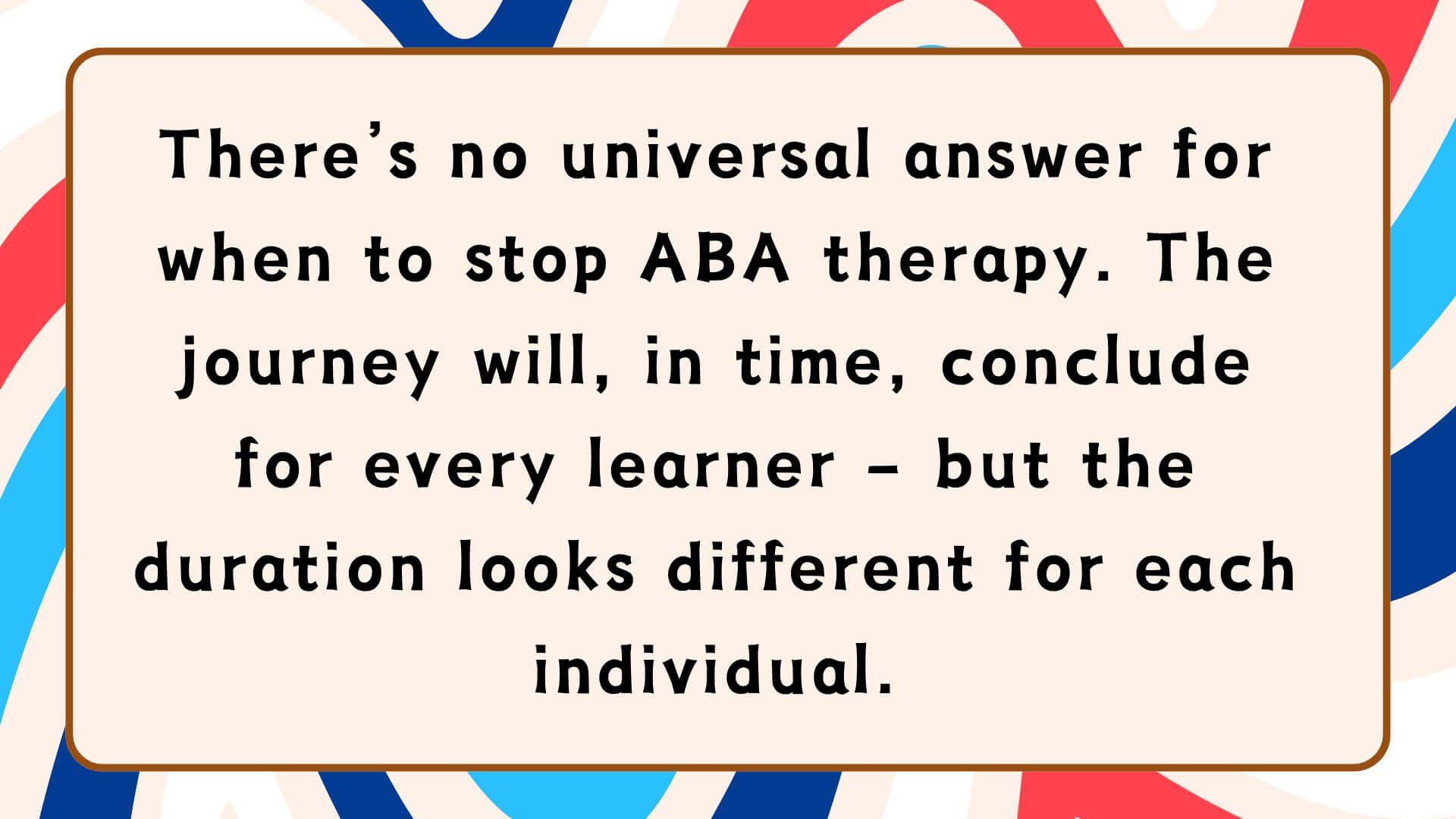
Understanding the Goals of ABA Therapy
Applied Behavior Analysis therapy is a widely recognized approach for supporting individuals with autism. Trained professionals incorporate the psychological principles of learning theory and behavior modification to address the learner’s confidence, self-sufficiency, and overall quality of life. By focusing on the learner’s strengths and preferences, ABA therapy not only addresses areas of difficulty but also builds on existing skills to promote overall development.
ABA therapy has been instrumental in helping autistic learners develop critical skills that enable them to interact more effectively with their environment and the people around them. For many, a main benefit of ABA is the development of communication and social skills. For others, it helps reduce incidents of self-injury.
While therapy may last for a set of years through early childhood to young adulthood, learners are equipped with skills and an outlook that contributes to a positive life experience for the long term.
When Is a Good Time To Stop ABA Therapy?
A learner can benefit from phasing out or gradually reducing weekly time in ABA therapy. This is a key step toward eventually discontinuing sessions.
But how do you know when to stop ABA? Carefully monitoring and assessing your learner’s behavior when services are reduced helps the clinical team determine a potential timeline for when to stop ABA. If a learner demonstrates sustained improvements and can maintain skills without regular intervention, it may suggest readiness for phasing out therapy. Improved self-regulation and the ability to cope with everyday challenges independently are also key factors in this decision.
It’s important to avoid abrupt changes and it’s critical that caregivers or parents, the Behavior Analyst, and the learner themselves, if appropriate, discuss goals, progress, and the future openly and collaboratively.
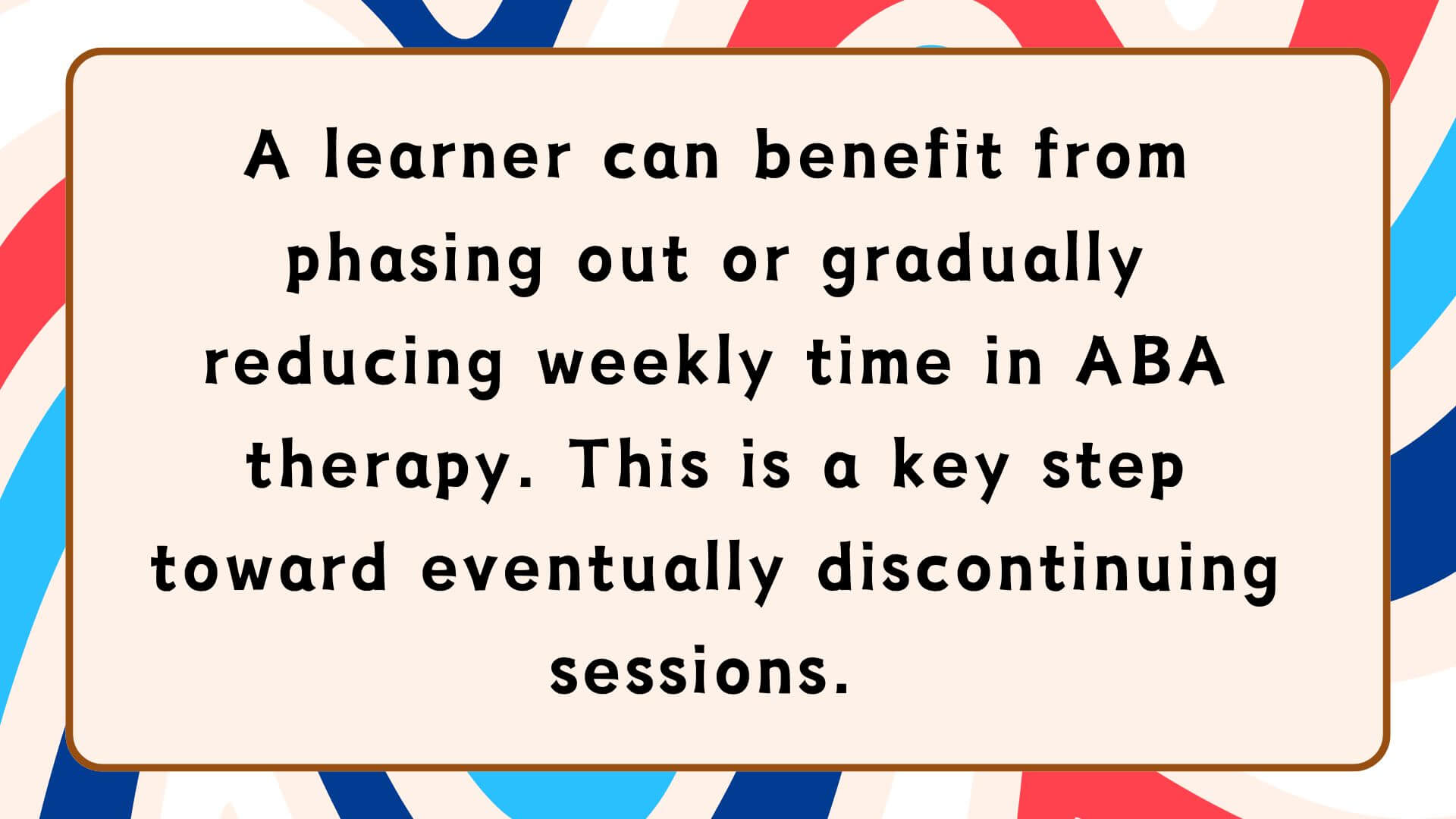
Signs of Readiness to Phase Out ABA Therapy
Why do people discontinue ABA services? There are numerous reasons, including financial constraints (due to not having insurance, or high out-of-pocket cost even with insurance), the time commitment required, and relocation to another area or state, but most frequently we see learners discharge as a result of improved skills. At ABtA, we celebrate every learner’s “graduation” from ABA therapy with an individual ceremony!
Keeping in mind that each learner’s experience is different, here are a few common signs of readiness to phase out ABA therapy:
- Improved communication abilities
- Enhanced social interactions
- Generalized skills in new settings
- Managing transitions with little distress
- Significant reduction in challenging behaviors
Taking into account the learner’s particular needs and goals, a common thread in assessing when to stop ABA is when the support team and family observe consistency and improvements sustained over time.

Consulting with Professionals
Therapists may use tools such as the VB-MAPP (Verbal Behavior Milestones Assessment and Placement Program) or the ABLLS-R (Assessment of Basic Language and Learning Skills-Revised) to assess a learner’s readiness for transitioning out of ABA therapy. For older learners, the team may use the AFLS (Assessment of Functional Living Skills) to assess their readiness to transition. Collaborative discussions allow for a holistic view of the learner’s development – addressing not only behavioral progress but also emotional and social growth.
Depending on your learner’s goals, other professionals may be at the table as you consider the prospect of phasing out ABA. This could include speech-language pathologists, occupational therapists, pediatricians, and educational professionals – all of whom can provide a broader perspective on your child’s progress.
A comprehensive evaluation typically includes:
- Direct observation
- Standardized tests
- Interviews with the learner
- Interviews with their family
- Assessing behavior outside of the ABA center
Based on these findings, your care team can develop a transition plan that outlines specific goals, timelines, and strategies for phasing out ABA therapy while ensuring continued support. Parents and learners should feel empowered to ask questions and express concerns during these consultations, as their insights and observations are invaluable in the decision-making process.
Transition Strategies and Continued Support
When you plan to stop ABA therapy, it’s important to follow the Behavior Analyst’s recommendations, which most often include a gradual, step-down approach to the frequency and length of sessions each week. Confidence and independence are key to success when leaving an ABA program. It’s vital that your learner has a runway, of sorts, to gradually reduce direct support, i.e. session frequency. As part of this transition process, parents may want to participate in the Balance Program to practice generalizing skills to the home and build their confidence implementing procedures that increase communication and prevent challenging behavior.
As a learner prepares for and experiences this important transition, feelings of overwhelm are common but generally manageable. This might include reinforcing problem-solving skills, coping strategies, and self-advocacy techniques that they can apply in different situations.
Behavior Analysts might implement follow-up caregiver support sessions or periodic check-ins to monitor progress and provide ongoing support. This continued engagement helps bolster skills acquired and practiced during therapy and ensures that any emerging issues are addressed promptly. Parents may choose to continue to participate in ABtA’s Balance Program to continue to receive ongoing support.
As part of a discharge plan, the Behavior Analyst will also suggest other referral sources and support systems where the learner can continue to receive support without the intensity level of ABA services. These could include IEP services, social skills groups, outpatient therapy, family-based therapy, support groups, etc.
Once regular ABA sessions cease, parents, caregivers, and families play a critical role in maintaining routine and continued progress. By using ABA principles daily with your learner, you help sustain the strides they made during therapy. Also, consider integrating additional social opportunities or extra-curricular activities so that your child has the experience of implementing new skills in new settings.
It’s also beneficial to have a clear plan in place for reintroducing more intensive support if needed, ensuring the learner always has access to the resources they need to be happy and successful. For this reason, be sure to keep an open communication line with your clinical team.
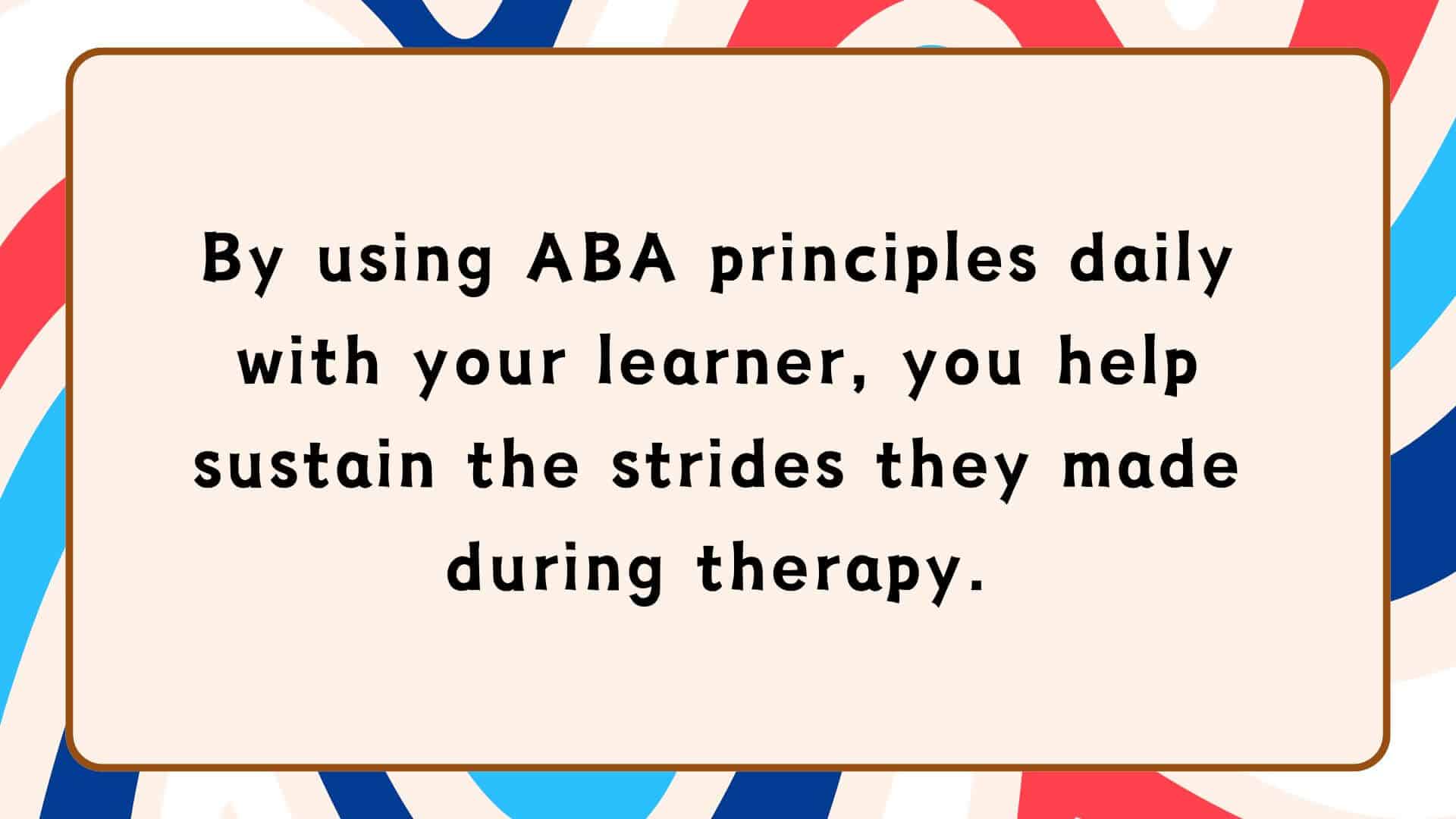
How Long Should a Child Stay in ABA Therapy?
Every learner is unique. There’s no one-size-fits-all answer for how long is appropriate for engagement in ABA therapy. Your learner may benefit from consistent ABA therapy for years. Some engage in ABA therapy only in their preschool years; others benefit from intensive ABA therapy as a complement to their homeschool curriculum. Still others gain advantages from being in a therapeutic program into early adulthood.
Whatever their age and stage when sessions are determined to conclude, a gradual phasing out is critical. Note, though, that even with a tiered approach, it’s not uncommon for learners to experience setbacks, just as neurotypical learners experience.
At What Age Does ABA Therapy Stop?
The total duration of ABA therapy isn’t dictated by a certain age. Deciding when to discharge from therapeutic services is determined by the learner’s caregiver or family, their clinical support team and, when appropriate, by the learner themselves.
However, each ABA center will have distinct program requirements when it comes to enrollment and age limits. Many programs extend to learners past the age of 21, depending on insurance regulations. Additionally, some insurers impose age restrictions for eligible coverage, but have recently seen the benefit of ABA for adults and extended these restrictions Currently, ABtA has programs geared towards teens and young adults to ensure they continue to benefit from ABA.
When to Reassess the Need for ABA Therapy
After you stop ABA, there may be instances where it’s appropriate to restart sessions or reach out to your learner’s therapist to discuss challenges. Reassessment is a continuous process, as the learner’s needs evolve over time. Major transitions, like changing schools or moving, can impact a child’s behavior and development, necessitating a temporary increase in support, for example.
Parents and caregivers should be vigilant for any signs of regression and should not hesitate to seek additional support if necessary. The goal is to provide a flexible, responsive approach that adapts to the learner’s changing needs, ensuring that they continue to make progress towards goals and thrive.
In some cases, reassessment may reveal that the child requires a different type or level of support. For example, as children grow older, their needs may shift from behavioral interventions to more focus on social skills, academic support, or vocational training.
By staying attuned to these changes and maintaining open communication with professionals, parents and caregivers can ensure that their learner receives the appropriate support at each stage of their development.
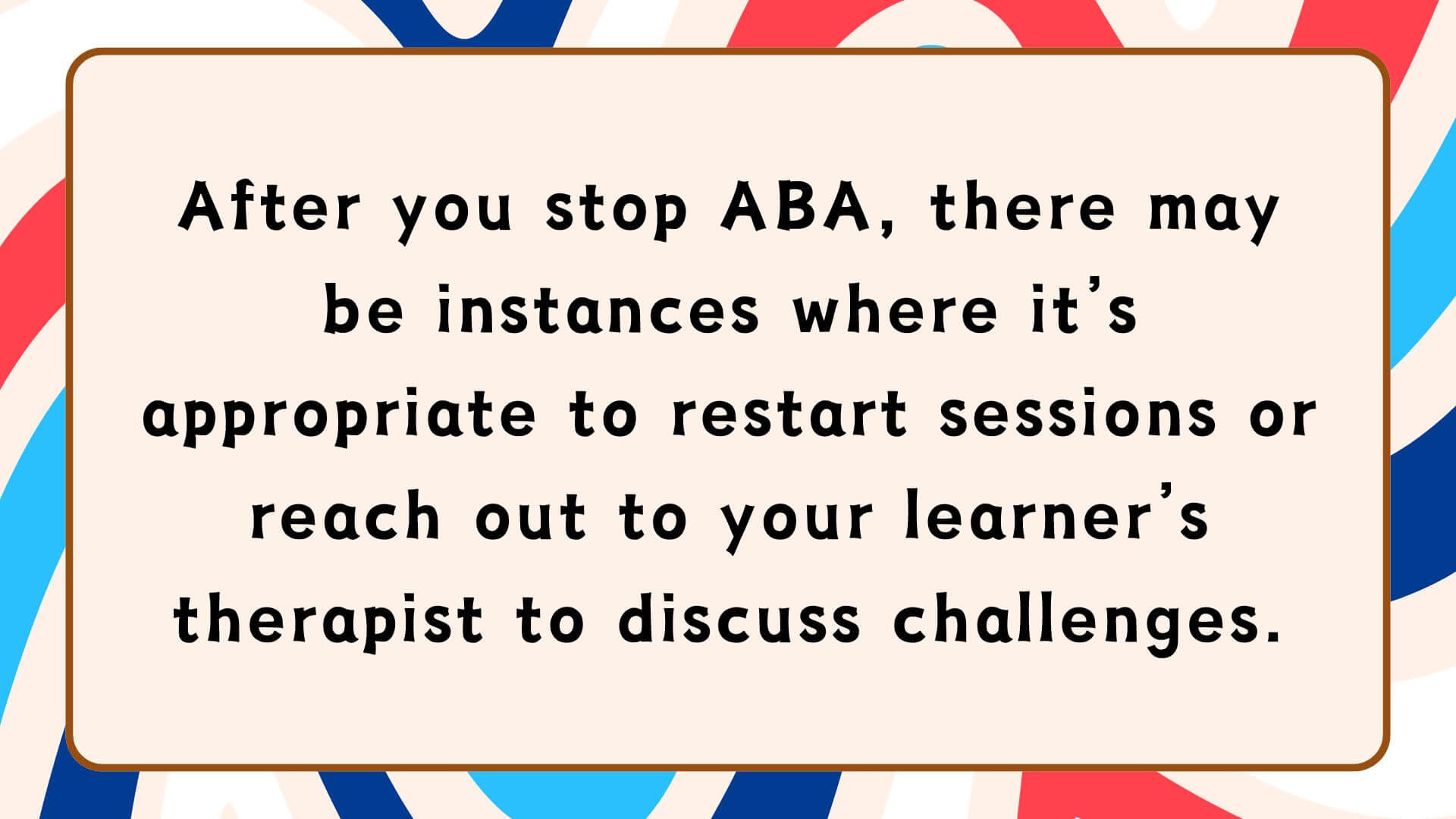
Finding the Right ABA Center
At A Bridge to Achievement, we engage autistic learners in a number of ABA programs:
- Therapy Sessions – individual/small group sessions for ages 2 to 21+
- Building Bridges – preschool alternative for early learners
- BRIDGES – homeschool complement/ADL program for ages 8-21+
- Social Skills Groups – small group sessions for children and teenagers
- Balance Program (telehealth parent training) – creating joy and balance in the home
- Practical Functional Assessment & Skill-Based Treatment (PFA/SBT) Program – building tolerance with an emphasis on safety, dignity, and rapport
- Vocational Skills Program (coming Fall 2024) – building vocational skills for teenagers and young adults
Our center-based services support your learner in maximizing their potential through evidence-based practices and trauma-informed care. Currently, we have three learning centers across North Carolina – two in Charlotte and one in Winston-Salem.
As part of our commitment to your learner’s development and your family’s goals, we will work closely with you from initial assessment and treatment plan development to service implementation and, when the time is right, discharge from ABA therapy. We stand ready to work with your learner and answer any questions you have. Support starts here. Connect with us today!

